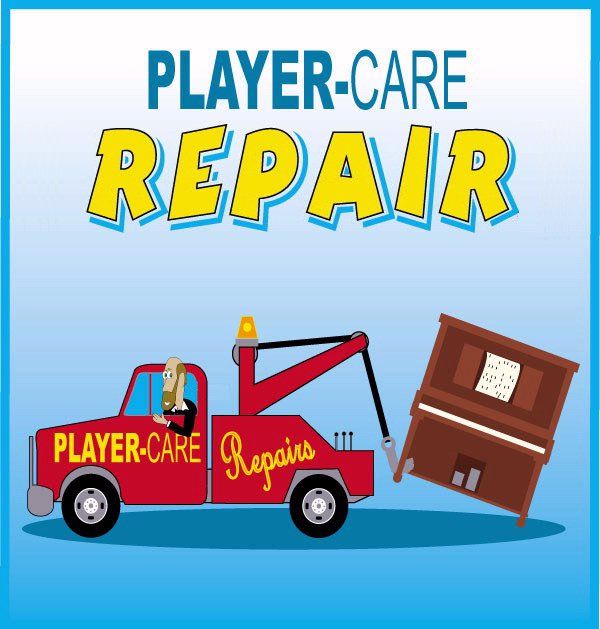
|

|

|

|

|

|
| Home | Manuals | Supplies | Search | Consult | Contact | Testing | Service |
|
Hi Gail, Back pressure will not harm anything as long as it doesn't exceed 20 pounds of pressure. In other words, you could reverse the flow of your vacuum cleaner and apply the pressure to the stack without fear of harming anything. Some technicians refer to this as the "blow test". If everything is working well, the note bellows should inflate and there should be no 'hissing'. On a good stack, one good steady blow from your lungs should be enough to 'puff out' all the bellows for a few seconds. (You do have some loss of air because of the bleeds, but that can be reduced by putting tape over the trackerbar during the test.) Generally, most of the pressure loss that's experienced when running the test is due to microscopic leaks in the bellows cloth and leakage at the exhaust valve facings. However, with the early Kimball, if the blocks are loose, you should be able to hear a whistling or hissing sound with a listening tube or a stethoscope*. You have to check all the way around each block, which is why using the pressure from a 'reversed' vacuum cleaner that's located in another room -to reduce the motor noise- is the best approach. *If you are using a stethoscope, you must remove the end piece so you have a clear piece of tubing between the area being tested and your ears. If you are using a listening tube, which is nothing more than a piece of rubber tubing that fits into your ear canal, hearing small leaks is quite easy if it is quiet in the surrounding area. Also, when testing the blocks with vacuum, put the listening tube right over the exhaust valve port. If the intake facing is leaking, you'll hear it. The real problem with troubleshooting the stack with vacuum or pressure is finding (or creating) an environment where there is little to no background noise. Another cause of reduced volume has to do with the regulation of both the piano action and the player action. If there's as little as 1/8" of lost motion in the piano action and 1/8" lost motion between the player action and the piano action, the volume of the music is reduced by 50%. That number gets larger if the let-off adjustment of the piano action isn't the required 1/8" from the strings. Here's what you have to remember. The total movement of the note bellows is only 3/8". If half that distance is wasted compensating for the lost motion in the piano and player actions, over 50% of the 'work' being done by the bellows is wasted (or lost). One of the most common jobs I do in older 'modern' players is regulating the piano and player actions so they meet manufacture specifications. The reason more than 50% of the power is lost is because a bellow develops its maximum power at time zero -when it first starts to move. From that point until the bellows is fully collapsed, the power curve slopes downward to zero -when the bellows is fully closed. Naturally, therefore, applying 50% more vacuum will compensate for the power lost due to poor regulation, but it also causes the various soft materials to wear out faster -exacerbating the whole situation, and creating the possibility for damage by 'hitting' the parts in the piano action too hard. Lastly, try pulling off each valve block by hand. If they are securely glued to the deck, you can pull on them as hard as you like and they won't move. But, if the glue seal is weak, you'll know it... Musically, John A Tuttle Player-Care.com |
| Player Piano Reference Materials - Click Here |

![]() ..To
The Top of this Page . . . . . . . . . . .
..To
The Top of this Page . . . . . . . . . . . ![]() ..To The HOME Page
..To The HOME Page
|
Since "Player-Care" is an internet business, I prefer that we correspond via E-Mail (click here to fill out the 'Request Form'). However, if I'm not in the middle of some other activity, you can reach me at 732-840-8787. But please understand that during the hours from 8AM-5PM EST (Mon-Sat), I'm generally quite busy. So, I probably won't answer the phone. If you get the answering machine, please leave a detailed message stating the reason for your call. Also, repeat your name and phone number clearly and distinctly. By necessity, I prioritize everything in my life. And, if you call and just leave your name and number, and ask me to call you back, it might be a day or two before I return your call. Why? Because I don't know why you want me to call and I might not be prepared to assist you in an effective and efficient manner. If you leave me an E-Mail address (which I prefer), spell it out phonetically. The more you do to help me, the more I can help you in return. Don't rush. You have four minutes to record your message. |
|
407 19th Ave, Brick, NJ, 08724 Phone Number 732-840-8787 (Voicemail Only, No Texts) |
